How to Stay Alert and Aware at the Dog Park
Going to the dog park is a wonderful experience for both you and your furry friend. It allows dogs to socialize, exercise, and play freely. However, for your visit to be enjoyable and safe, it’s crucial to stay alert and aware while you’re there. Here are some actionable tips to help you remain attentive while you enjoy your time at the park.
Be Mindful of Your Surroundings
When you arrive at the dog park, take a moment to survey the area. Look for the following:
- Other Pets: Notice the types of dogs present. Some breeds may be more energetic or aggressive, which can impact your dog’s comfort.
- Park Layout: Familiarize yourself with the layout. This includes exits and any potential hazards like benches or landscaping.
- Fences and Gates: Check if all gates are secure. If a gate is left open, an excited dog could easily dart out.
Keep Your Dog in Sight
This may seem obvious, but keeping an eye on your dog as they play is crucial. Always position yourself where you can see your dog. If they wander off, make sure to follow and keep tabs on who they are interacting with. Being proactive can prevent misunderstandings between dogs.
Stay Engaged
While watching your dog, engage with other owners. This not only helps you stay alert, but it also builds community. Share tips, discuss your dogs, or talk about dog care. However, keep in mind not to get too distracted. Maintain your focus on the park’s activity.
Recognize Signs of Stress or Aggression
Being able to identify body language in dogs is vital. Some signs of stress or aggression include:
- Stiff Body: A tense posture can indicate discomfort.
- Raised Hackles: This is a sign that a dog feels threatened.
- Growling or Snapping: These are clear warning signs that a dog’s play may turn aggressive.
If you notice these signs, be ready to intervene swiftly to protect both your dog and others.
Limit Distractions
While it’s easy to get engrossed in your phone or conversation, it’s best to limit distractions. Keep your phone on silent to avoid being absorbed in notifications. If you feel the urge to scroll through social media, try to resist until you’re home. Instead, use this time to observe your dog and the environment around them.
Set Boundaries and Rules
Before letting your dog run free, establish some rules for yourself and your dog. Consider the following guidelines:
- Know Your Dog: Understand your dog’s temperament and behavior. Are they friendly with other dogs? Setting a limit on how much interaction they can have can be beneficial.
- Designate Play Times: Allocate specific times when you can check your surroundings. This helps maintain a balance between playtime and awareness.
- Use Leashes Wisely: Even at a dog park, a leash may be necessary if you feel uncomfortable or need to control your dog quickly.
Educate Yourself
Knowledge is power. Familiarize yourself with common dog behaviors and park etiquette. The more you know, the easier it will be to react calmly and effectively. Consider visiting websites like The American Kennel Club or PetMD for valuable information.
Staying alert and aware at the dog park is essential for your dog’s safety and your own peace of mind. By following these tips, you’ll create an enjoyable environment for both you and your dog. Remember that being proactive ensures a better experience for everyone involved.
So next time you visit the dog park, keep these strategies in mind. With your attention focused, you and your furry companion can have fun and forge great memories without worry!
Understanding Dog Behavior in Playtime
Understanding dog behavior during playtime is essential for both dogs and their owners. It helps in fostering a safe, enjoyable environment that promotes healthy socialization among canine companions. Whether you have a rambunctious puppy or a more seasoned dog, observing their playful interactions provides vital insights that enhance the overall experience at the dog park.
Recognizing Play Signals
When dogs play, they communicate their intentions through body language. Recognizing these signals can help you ensure that play remains friendly and enjoyable. Here are some key signals to watch for:
- Bowing: The classic play bow, where a dog stretches its front legs while keeping its back end elevated, is an invitation to play.
- Tails Up: A wagging tail often indicates excitement and a willingness to engage.
- Playful Barks: The sound of happy barks typically indicates joy, while growls can signify playfulness if accompanied by relaxed body language.
- Paw Play: Dogs may use their paws to bat at each other in a friendly manner, signaling enthusiasm.
Understanding Different Play Styles
Each dog has its unique play style, which can be influenced by breed, age, and prior experiences. Understanding these variations helps prevent conflicts and ensures a positive play environment. Consider the following types of play styles:
- Chaser: Some dogs love to chase others, making them the life of the party.
- Wrestler: Dogs that enjoy roughhousing often engage in play fighting, which can be safe if both have matching energy levels.
- Solo Players: Not all dogs prefer group play; some might enjoy playing with toys or exploring on their own.
Identifying Warning Signs
While playtime is often fun, it is crucial to be aware of any warning signs that indicate play has gone too far. Look for signs such as:
- Excessive Growling: If growls become louder or more aggressive, it may be a sign of discomfort.
- Stiffness: A sudden tensing of the body can indicate a dog is feeling overpowered or anxious.
- Snapping or Biting: If a dog starts to snap or bite without playful energy, it’s time to intervene.
Keeping Playtime Safe
To ensure playtime remains enjoyable for everyone, consider the following safety tips:
- Supervision: Always keep an eye on your dog to intervene if necessary.
- Match Energy Levels: Pair dogs with similar play styles and energy levels to avoid one getting overwhelmed.
- Avoid Tug-of-War: Unless both dogs are familiar with each other, avoid games that can lead to competition.
Socialization and Playtime
Regular playtime serves as a critical aspect of a dog’s social development. Interacting with different dogs allows your pet to learn important social cues and behavioral norms. Here’s how you can use playtime effectively for socialization:
- Start Young: Introduce puppies to various dog breeds to familiarize them with different play styles.
- Controlled Environments: Use dog parks where you can monitor interactions and establish a controlled play area.
- Positive Reinforcement: Reward good behavior during play with treats or praise to encourage positive interactions.
Resources for Further Learning
For additional guidance and extensive information about understanding dog behavior, consider visiting these valuable resources:
- American Kennel Club – Offers insights into different dog breeds and their behaviors.
- ASPCA – Provides resources on animal behavior and welfare.
- PetMD – A resource for dog health and behavior articles.
By understanding dog behavior during playtime, you can create a safer, more enjoyable experience for your furry friend and other dogs at the park. Observing their signals and respecting their boundaries ensures that playtime remains a positive experience for all.
Essential Safety Tips for Dog Owners
Owning a dog brings joy and companionship, but it also comes with responsibilities. As a dog owner, ensuring the safety of your furry friend is paramount. Whether you are at home, on a walk, or at the dog park, it’s important to keep your pet safe and secure. Here are essential safety tips for dog owners that can help protect your canine companion and enhance your bonding experience.
Proper Identification
Always ensure your dog has proper identification. This can significantly help if your dog gets lost. Consider the following:
- Use a sturdy collar with an ID tag featuring your contact details.
- Microchip your dog for permanent identification. This method is especially useful, as tags can easily be lost.
- Make sure the information on your ID tag and microchip is up-to-date.
Leash and Harness Safety
Proper equipment is crucial when leading your dog on walks. Consider these tips:
- Invest in a strong and comfortable leash. Flexi leashes pose risks in crowded areas.
- Select a harness that fits well and is suited for your dog’s size and breed. Harnesses prevent pulling and offer better control.
- Always use your leash, especially in public spaces or near traffic. This keeps your dog safe from potential dangers.
Socialization and Dog Parks
Socializing your dog is essential for mental health and behavior. However, dog parks come with their own set of safety challenges:
- Observe the park rules. Many parks have designated areas for large and small dogs.
- Never bring an aggressive or unwell dog to a dog park to avoid incidents.
- Keep an eye on your dog at all times. Watch for signs of stress or aggression in other dogs.
- Limit your dog’s playtime to avoid exhaustion and overheating, especially in hot weather.
Nutrition and Health
Maintaining your dog’s health is vital for a long and happy life. Follow these guidelines to ensure your dog’s well-being:
- Feed a balanced diet suitable for your dog’s age, size, and breed.
- Regular check-ups with your veterinarian can help catch health issues early.
- Stay current with vaccinations and flea/tick treatments.
Emergency Preparedness
Being prepared for emergencies can make a significant difference in stressful situations. Take these actions:
- Have an emergency plan that includes your dog’s needs. Know where the nearest veterinary clinic is located.
- Keep a pet first aid kit on hand, stocked with essentials like bandages, antiseptic wipes, and medication.
- If you travel often, ensure boarding facilities or pet sitters are trustworthy and familiar with your dog’s needs.
Environment Awareness
Your surroundings can also pose risks to your dog. Here are tips to maintain a safe environment:
- Be cautious of toxic plants and substances, including fertilizers, pesticides, and certain human foods such as grapes or chocolate.
- Secure fences to prevent escape. Regularly inspect for any repairs needed.
- Be mindful of temperature extremes, as both heat and cold can be dangerous for your dog.
By following these essential safety tips, you can create a secure and nurturing environment for your dog. Remember that your dog’s safety and happiness should always be a top priority. For further reading on dog care and safety, you can visit the American Kennel Club or ASPCA.
For new dog owners, learning about safety measures is crucial. Each dog is unique, and understanding their individual needs will help you provide the best care. Stay alert, be prepared, and enjoy those precious moments with your furry friend!
Recognizing Signs of Aggression Among Dogs
Understanding canine behavior is crucial for any dog owner, especially in social environments like dog parks. Aggression among dogs can escalate quickly, and recognizing the signs early can make a significant difference in ensuring safety for all pets and their owners. Here are key indicators to watch for when observing interactions in a dog park.
Body Language Signals
Dogs communicate primarily through body language. Look for the following signs:
- Stiff posture: A dog that stands rigid with its body straight is often feeling threatened or defensive.
- Raised hackles: Fur standing up along the back can indicate excitement or anxiety. This is a common sign of potential aggression.
- Direct stare: If a dog is fixated on another dog with an unblinking gaze, it can be a precursor to an aggressive interaction.
- Growling or snarling: These vocalizations are clear signs that a dog is uncomfortable and may act aggressively if provoked.
- Bearing teeth: This is a definitive warning. If a dog shows its teeth without barking or growling, it’s best to back away.
Behavioral Changes
In addition to body language, pay attention to sudden changes in behavior. These can be significant indicators of aggression:
- Reactivity: If a dog becomes overly excited or agitated upon encountering another dog, this may lead to aggression.
- Avoidance: If a dog begins to back away or hide, it could mean they feel threatened and might retaliate if cornered.
- Mounting: While common in play, excessive mounting can indicate dominance or aggression.
- Targeting specific dogs: If a dog starts barking excessively at certain dogs while behaving calmly around others, it may have an underlying issue with that particular dog.
Situational Awareness
Being aware of the situation is crucial for dog park safety. Here are some scenarios that can increase the likelihood of aggression:
- Overcrowding: Too many dogs in one space can lead to stress and conflict, making aggression more likely. Keep an eye on the number of dogs playing.
- Resource guarding: If a dog has a toy or treat, it might become aggressive if another dog approaches. Watch for dogs that are possessive over items.
- Leash tension: Dogs on leashes may feel restricted and threatened. If you sense tension, it’s best to calmly give them space.
- Fearful dogs: Dogs that are new to the park or seem timid may react defensively when approached by more assertive dogs.
Recognizing Trigger Signs
It’s essential to identify what triggers aggressive behavior in certain dogs. Common triggers include:
| Trigger | Behavior |
|---|---|
| High energy dogs | May become anxious or defensive when approached too quickly. |
| Excessive barking | Signals distress; step back to avoid escalation. |
| Unfamiliar dogs | Dogs may show aggression when they encounter unfamiliar canines. |
What to Do If You Witness Aggression
If you observe signs of aggression between dogs, it’s essential to act promptly:
- Stay calm: Your demeanor impacts your dog’s behavior. Maintain composure to prevent escalating tensions.
- Intervene if safe: If you feel confident doing so, distract the dogs to break their focus. Use a loud, firm voice or noise-maker.
- Leash your dog: If you own a dog showing signs of aggression, leash them immediately to prevent any confrontations.
- Leave the area: If a situation feels out of control, it’s wise to remove yourself and your dog from the environment.
For additional resources on dog behavior and training, you can explore articles from American Kennel Club and ASPCA. Remember, being proactive and observant at dog parks significantly contributes to a safe environment for all.
The Importance of Socialization for Your Dog
Socialization is key to a dog’s happiness and well-being. It naturally helps them develop into balanced, well-adjusted companions. Exposing your dog to a variety of experiences, environments, and other animals promotes their emotional and physical health. But how do you ensure your furry friend is properly socialized? Let’s explore the different aspects of socialization for dogs.
One of the most critical stages for socialization occurs when your dog is a puppy, typically between 3 and 14 weeks of age. During this time, their minds are like sponges, open to learning about the world around them. Here are some benefits of early socialization:
- Reduces fearfulness: Well-socialized dogs are less likely to become fearful of new experiences.
- Improves behavior: Socialized dogs are often more obedient and easier to train.
- Enhances adaptability: A well-socialized dog can handle new situations with confidence.
Once your dog reaches the appropriate age, it’s important to expose them to a variety of people, situations, and environments. This can include:
- People: Invite different friends over, especially those who are dog-savvy.
- Other Dogs: Arrange playdates with dogs of various sizes and temperaments.
- Environments: Take your dog for walks in diverse locations, such as parks, cafes, and busy streets.
It’s not just about exposure; how you engage your dog during these interactions can also impact their social development. Positive reinforcement is crucial. Reward your dog with treats or praise when they interact appropriately with new people or animals. This will create positive associations in their mind.
For adult dogs, socialization continues to be important. It helps them maintain their good behavior and adaptability throughout their life. Here are some tips for socializing adult dogs:
- Regular Dog Parks Visits: Dog parks are excellent places for your dog to meet different breeds and temperaments.
- Training Classes: Consider enrolling in obedience training or agility classes where dogs learn to work together.
- Meetups: Join local dog clubs or groups to encourage socialization with other dogs and owners.
Like humans, dogs can face stress from new experiences. Thus, it’s important to read their body language during socialization. Here are some signs that your dog may be anxious or uncomfortable:
- Paw lifting or tail tucking
- Excessive barking or growling
- Avoidance behaviors
If you notice these signs, try to remove your dog from the stressful situation while remaining calm. Gradually re-introduce them to new experiences over time to increase their comfort level.
Socialization also helps minimize behavioral problems like aggression and anxiety. When dogs are used to being around different people and pets, they are less likely to react negatively in unfamiliar situations. This is key for preventing incidents in settings like vet visits or during walks.
Consistency is vital in the socialization process. Regularly exposing your dog to new experiences throughout their life will reinforce their confidence. Make socialization part of your daily routine, even if it’s just introducing them to a new dog each week or visiting a new park.
For additional reading on dog training and socialization, visit ASPCA and RSPCA. These websites offer valuable resources to help you provide a well-rounded social experience for your dog.
Emphasizing socialization is an investment in your dog’s future happiness as well-rounded companions. The more you expose your pet to different situations, the easier it will be for them to navigate life’s challenges. So don’t delay! Start your dog’s socialization journey today for a healthier, happier pup.
How to Approach and Interact with Other Dog Owners
Connecting with fellow dog owners can significantly enhance your experience at the dog park. Understanding how to approach and interact with them makes the visit enjoyable for both you and your furry friend. Here are some effective strategies to foster meaningful connections with other dog owners.
Start with a Friendly Approach
When you see someone at the dog park, approach them with a friendly demeanor. Smile, make eye contact, and offer a simple greeting. This lays the groundwork for a positive interaction. You can say something like, “Hi there! Your dog seems really friendly!” This shows that you’re interested in their pet and opens the door for conversation.
Read Body Language
Before diving into conversation, take a moment to observe the other dog and owner. Body language is key in determining whether someone is open to interaction. Look for signs such as:
- Relaxed posture of the owner
- Dogs that are playfully engaged or roaming comfortably
- A calm, excited atmosphere around the park
If the owner’s dog appears tense or defensive, it’s best to wait until they seem more relaxed before introducing yourself.
Engage with Their Dog
Dogs often serve as excellent icebreakers. Use their pets to foster rapport. You can kneel down to their dog’s level and gently offer your hand to sniff. This allows the dog to get comfortable with you, making the owner more at ease. You might say something like, “What’s your dog’s name? He looks like a lot of fun!” Such inquiries not only show your interest but also invite the owner to share their dog’s personality and quirks.
Share Your Own Experiences
Once the conversation starts flowing, share something about your own dog. Discuss your training experiences or funny things they do. This will encourage the other owner to open up and share their own stories. For instance, say something like, “My dog loves to dig in the sand at the beach. Does yours have any quirks?” This creates a friendly exchange full of laughter and camaraderie.
Be Respectful of Boundaries
While interacting, respect each other’s personal space. Not all dog owners may be comfortable with lengthy conversations or discussions about their dog. If the owner seems to be in a hurry or engaged in another activity, politely wrap up the chat. You can say, “It was nice chatting! I hope we can let our pups play again!”
Maintain an Active Presence
Building relationships goes beyond a single visit. Make consistent visits to the dog park and look for the same faces. Regular encounters can help establish familiarity, making it easier to strike up conversations over time. You can enhance these interactions by participating in dog park activities, like training classes, which are often organized in local parks.
Follow Up and Build Friendships
Once you’ve made a connection, consider exchanging contact information. You might ask them if they’d like to meet up for walks together or join a group playdate. This can enrich both your social life and that of your dog. Remember, friendships built at the park can extend into real life when you regularly check in with each other!
Additional Resources
For more insights on canine etiquette and socializing, check out resources such as:
Remember, these interactions add value to your dog park visits, create community, and build friendships. Approach with confidence and a smile, and you’ll be well on your way to creating enjoyable connections with fellow dog lovers.
Creating a Positive Experience for Every Dog in the Park
Visiting a dog park can be a delightful experience for both you and your furry friend. However, it’s essential to create a positive atmosphere for every dog that shares the space. This includes understanding dog behavior, practicing good etiquette, and ensuring the safety and enjoyment of all park visitors.
One of the first steps in fostering a positive experience is understanding dog body language. Dogs communicate through their posture, movement, and vocalizations. Learning to interpret these signals can help you gauge whether a dog is comfortable or stressed. For example:
- A dog that is relaxed and playful will have an open mouth, may wag its tail, and frequently play bow.
- If a dog stands stiffly, growls, or has its tail tucked, it may be anxious or fearful.
- Dogs that are comfortable often engage in chasing, rolling over, or inviting others to play.
By observing these cues, you can help prevent potential altercations and create a happier setting. If you notice any signs of aggression or discomfort from any dogs, it’s wise to intervene. Speak calmly to the dog owners and help redirect the situation.
Another crucial aspect of ensuring a positive atmosphere in the dog park is practicing good etiquette. Here are some tips to keep in mind:
- Always keep an eye on your dog while they play. Dogs can get into trouble if not monitored closely, whether through roughhousing or getting into conflicts.
- Bring waste bags to clean up after your pet promptly. This keeps the area clean and enjoyable for everyone.
- Many dogs can be protective over food. It’s best to avoid bringing treats or meals into the park to minimize any food-related disagreements.
- While in the park, make sure your dog is on a leash until you’re in the designated off-leash area. This keeps them safe and gives you control during introductions.
Ensuring the park is a safe environment for your dog involves more than just monitoring games. Socialization is a critical element for a dog’s development. The park is often the first place many dogs learn to interact with others, which is fundamental to their well-being. Proper socialization helps reduce anxiety and aggression in the long term.
Remember that every dog has different social needs. Some dogs thrive in crowded environments, while others may feel overwhelmed. Pay attention to your dog’s reactions. If they seem stressed or want to escape the situation, it could be a sign to find a quieter corner of the park or visit during off-peak hours.
To enhance the experience further, encourage structured play. Bring toys and organize games that allow dogs to engage positively without overwhelming one another. Introduce games like fetch or agility challenges that encourage teamwork and social interaction. Below is a list of popular dog park games:
- A classic game that keeps your dog active and exercises their retrieving instinct.
- Bring a sturdy rope that allows two dogs to engage in friendly competition.
- Set up a mini-agility course with jumps and tunnels to challenge and occupy dogs.
Furthermore, fostering a friendly environment requires building a community with fellow dog owners. Engage with others, share experiences, and be open to advice. Building relationships can foster a supportive atmosphere, making the park enjoyable for all.
Creating a positive experience for every dog in the park requires education, good etiquette, and community involvement. By being observant, respectful, and engaged, you contribute to a safe environment that enables dogs to thrive and socialize effectively.
For more information on dog parks and community resources, consider visiting American Kennel Club or Humane Society.
Key Takeaway:
Visiting a dog park can be a joyful experience for both you and your furry friend, but staying alert and aware is essential for safety and social interaction. This article highlighted several key aspects to navigate the dog park environment effectively while ensuring a positive experience for all.
First, understanding dog behavior during playtime is crucial. Dogs communicate through body language, and recognizing common signals can help you gauge whether play is friendly or escalating towards aggression. It’s vital to familiarize yourself with how dogs express excitement and stress, which will prepare you for potential conflicts.
Safety tips for dog owners are paramount. Always keep a watchful eye on your dog, especially in a crowded area. Carry essential supplies like water, poop bags, and a first aid kit for your pet. Additionally, be mindful of your dog’s health status, ensuring they are up-to-date on vaccinations to prevent the spread of diseases in communal dog areas.
Recognizing signs of aggression among dogs can prevent serious incidents. Look out for warning signs, such as growling, stiff postures, or raised hackles. If you see these behaviors, it’s best to intervene and separate the dogs before situations escalate. By being proactive, you contribute to a safer environment for everyone.
The importance of socialization for your dog cannot be overstated. Regular visits to the dog park help your pet develop social skills, learn boundaries, and foster friendships with other dogs. This interaction not only makes your dog more well-adjusted but can also create a fun atmosphere.
When interacting with fellow dog owners, approach them respectfully. Start conversations with friendly openness, which can build a sense of community and mutual support among dog lovers. Encourage positive experiences by teaching your dog to greet others politely.
Creating a positive experience in the dog park transcends just your own pet. It entails fostering an environment where every dog can enjoy their time while remaining safe and happy. By staying alert and aware, you help ensure that both you and your dog have a rewarding park outing every time. Through understanding, safety awareness, active social engagement, and being considerate of all park goers, you contribute to a harmonious and enjoyable dog park experience.
Conclusion
Staying alert and aware at the dog park is crucial for ensuring a safe and enjoyable environment for both you and your furry friend. By understanding dog behavior during playtime, you can better anticipate how dogs interact and when things might escalate. Being mindful of essential safety tips, such as keeping an eye on your dog and ensuring they’re well-socialized, helps minimize risks and fosters a positive atmosphere.
Recognizing signs of aggression can be vital in diffusing potential conflicts before they escalate. Understanding these cues—like growling, stiff body language, or raised hackles—allows you to intervene when necessary and ensure that all dogs in the park can play safely.
Approaching and interacting with other dog owners positively not only builds a sense of community but also enhances the experience for everyone involved. Simple gestures, like asking questions and sharing tips, can create a welcoming environment where both dogs and owners feel comfortable.
Creating a positive experience for every dog in the park goes a long way. You can help facilitate healthy social interactions by modeling gentle behavior and encouraging play that nurtures respect and fun among dogs. Balancing vigilance with an open heart will lead to joyful moments and beautiful memories at the dog park, ensuring that every visit strengthens the bond between you and your dog while fostering a friendly community of dog lovers.
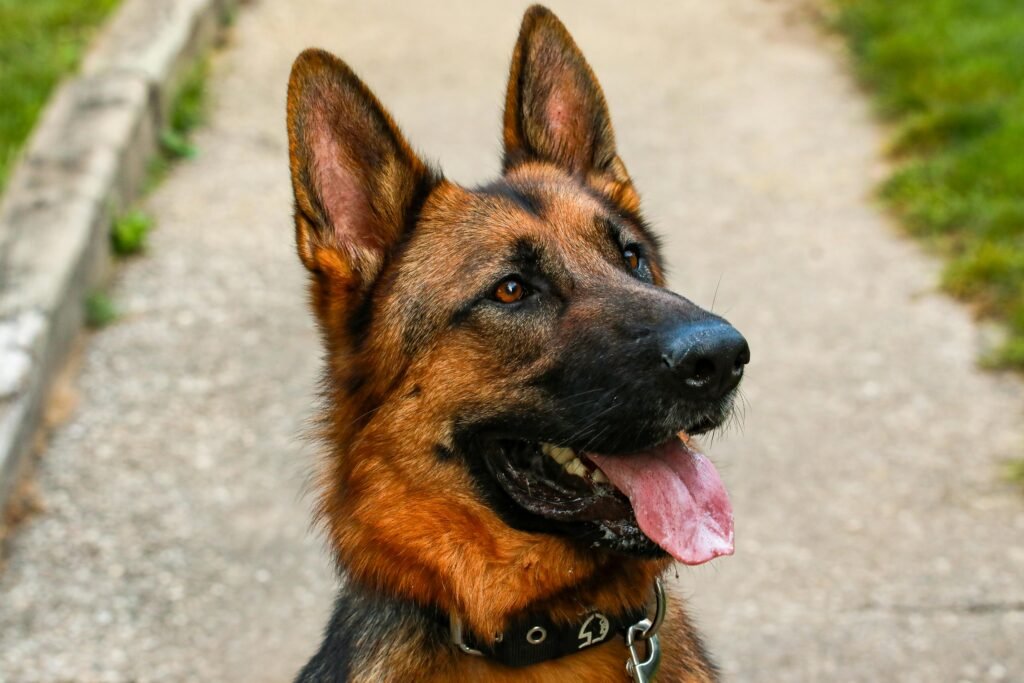
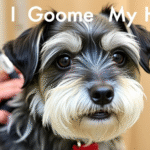
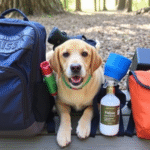
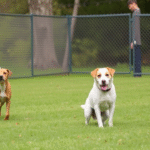
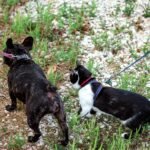

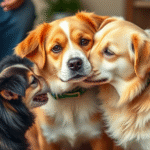
Leave a Reply